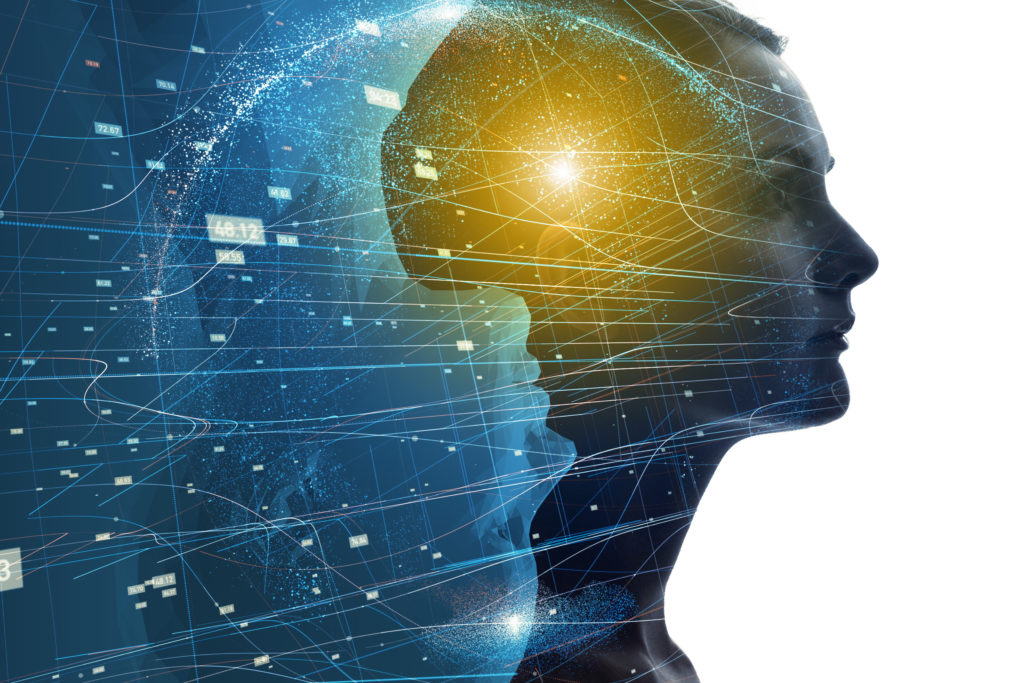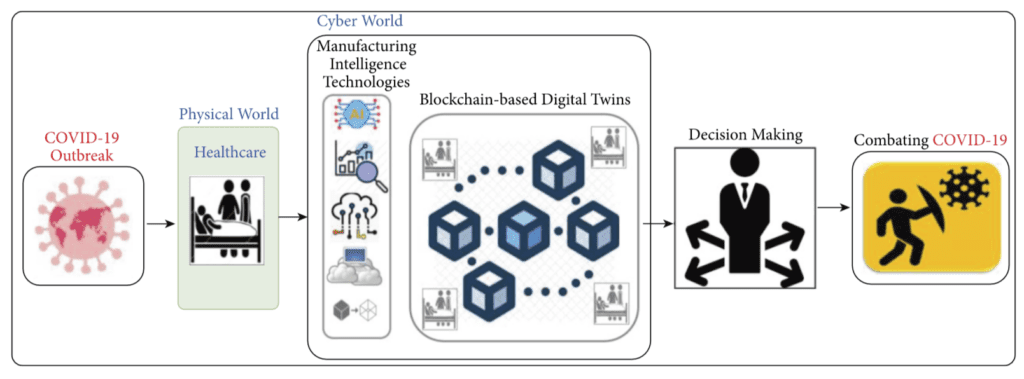
Digital twins are virtual replicas of a physical object. Image: Adobe Stock.
- Digital Twins may be the future of healthcare.
- Remote working and early warning systems can tackle pandemics.
- Deploying Medical Cyber-Physical Systems faces many challenges.
Digital twins—virtual replicas of assets or systems—have traditionally been used for engineering and construction [1]. However, there’s a new use case on the horizon: combatting the current covid-19 pandemic crisis as well as any future pandemics.
What are Digital Twins?
Digital twins are virtual replicas of complex assets or systems. As well as replicating physical objects, digital twins can replicate device attached to humans and machines [2]. The twins span lifecycles and update with real-time data, using machine learning (ML) and simulation to help decision-making. The main difference between a digital twin and a simulation is that the digital twin exists entirely within a virtual environment [3].
In a 2022 special issue of the journal Computational Intelligence and Neuroscience, a team from Cork Institute of Technology in Ireland outlined their plan for tackling COVID-19 outbreaks with digital twins. According to the team, what’s needed is a decentralized, blockchain-based collaborative digital twins framework. Decentralizing the framework transfers decision-making and control from centralized to distributed networks, providing a high level of privacy—essential for healthcare-related data—while preserving transparent systems.
Why Combine Blockchain and Digital Twins?
Combining digital twins and blockchain is, according to the authors, the “right way” to build secure and decentralized Medical cyber-physical systems (MCPSs), which integrate a network of medical devices [4]. The idea is that participants (e.g., patients, doctors, or hospitals) are represented by multiple digital twins deployed within the MCPS. The digital twins collaborate and interact, sharing data and performing real-time predictions; The predicted risks allow the MCPS to advise on lockdowns, restrictions, and quarantine.
The following image, from the study, shows a bird’s eye view of the blockchain-based collaborative digital twins for MCPS to combat COVID-19:

Decentralized data storage, transaction tracking, and scalability are just a few of the many issues which have prevented MCPSs being deployed on a major scale to date [5]. Combining digital twins with blockchains addresses these issues. They key benefit, state the study authors, is how information and interactions between digital twins and the blockchain is stored; adding blockchain, which audits and tracks transactions initiated by digital twins [6], means that fast data sharing can happen safely. The use of blockchain also guarantees decentralized data storage and scalability.
Adding data analytics to the mix provides more benefits, including real-time data analytics and the ability to efficiently manage data quality and quantity. According to the study authors, the “significant contributions” of predictive data analytics includes assessing potential risks when an increase in disease cases are seen; ML can:
- Provide an estimate of whether a person is positive or negative for a disease based on their symptoms.
- Quickly count case numbers and identify disease hotspots.
- Simultaneously monitor positive cases and the people around them who may (or may not) get sick.
- Push remote alerts to everyone around the infected or potential infected person. For example, a person may receive a “red warning alert” due to a confirmed case in a close contact (a close friend, relative, or neighbor).
The procedure can significantly limit COVID-19 outbreaks.
Challenges for Digital Twins Technology
There are some major technical challenges that must be overcome before deploying these systems. For example, timing and speed are an issue for digital twins. A solution could be to locally store collected data in monitoring technologies like CCTV, but this poses a security risk for data. Another major issue: advanced communication technologies like beyond 5G (B5G) or 6G are required to handle the massive amounts of data that must be moved at fast speeds. However, both are in research phases and are not functioning technologies yet [7, 8]. Machine learning at the edge, which takes the “compute” out of the data center and closer to the action, might be the key to providing full connection and high accuracy while preventing data loss. However, ML models were never designed to be deployed at the edge and the solution—TinyML—is just getting started [9].
As we make progress to faster, more secure data transmission, the future of a decentralized, blockchain-based collaborative digital twins framework seems certain. Perhaps by the next big pandemic, the result will be more effective transmission controls, fewer general lockdowns, and a fast resume to “life as normal.” Until then, be prepared to see your doctor the old-fashioned way: in person.
References
[1] Digital Twins Bringing Artificial Intelligence to Engineering
[4] Medical cyber-physical systems: A Survey
[5] Blockchain for Digital Twins: Recent Advances and Future Research Challenges
[6] A blockchain-based approach for the creation of digital twins
[7] What is 6G?
